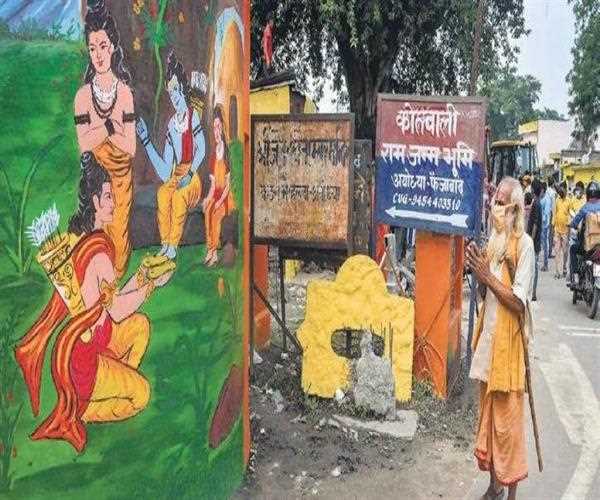Search here

04-Aug-2020
Can Lord Ram defeat the Coronavirus?
At the beginning of August, the pandemic in India continued to spread, and the number of new cases in a single day continued to break new highs. The cumulative number of confirmed cases has stabilized the world's third position. However, the Indian government announced that Prime Minister Modi would attend the groundbreaking ceremony of the Rama Temple in Ayodhya, the holy city of Hinduism, on August 5. Although the ceremony organizers restricted the number of special guests and warned the local people not to go to the temple to gather for celebrations, and will send an additional 4,500 police force to maintain order at the scene, many people are still worried. They come from all over the country. Will this Hindu celebration of the century cause a wider spread of the coronavirus?
However, such concerns do not seem to prevent Modi from seizing this once-in-a-lifetime opportunity to promote "Hindu nationalism." You must know that the pandemic has already dealt a heavy blow to the Indian economy. Modi's blueprint for "achieving a $5 trillion economy by 2025" is about to become an imaginary "Indian flying pie," coupled with the domestic opposition. With increasingly sharp criticism from the camp and more diplomatic conflicts with neighboring countries, Hindu nationalism has become the most important pawn for Modi's cabinet to gather people's hearts and maintain political stability.
Religious conflict tipping point
The holy city of Ayodhya in Uttar Pradesh is called the Hindu Jerusalem. Indians believe that this is the birthplace of Rama, a legendary hero in the Indian epic "Ramayan" and one of the most important gods of Hinduism. Five hundred years ago, after the Muslim Mughal Empire occupied India, a Babri Masjid was built in Ayodhya to commemorate the founder of the empire, Babur. Hindu believers believe that the Babri Mosque site originally had a Hindu temple marking the birthplace of Rama, built in the 11th century. The Muslim rulers destroyed the Temple of Rama and erected a mosque on its foundation.

In the more than 300 years, when the Mughal Empire was strong, the Hindu people could only swallow their anger and let Muslims turn the mosque into a holy place of worship in Islam. In the mid-nineteenth century, when British colonists gradually encroached into the Indian subcontinent, the Mughal Empire's rule gradually declined, and the conflict between Hindus and Muslims gradually became fierce. From erecting the Hindu shrine in the mosque's courtyard to placing the statue of Rama on the outer wall of the mosque, the Hindu believers began the "retake of the holy land" step by step.
As a political party whose purpose is Hindu nationalism, the Bharatiya Janata Party, which Modi belongs to, has taken the reconstruction of the Rama Temple as one of its programmatic goals since its establishment. Hindu extremists had repeatedly attacked the Babri Mosque before and clashed with local Muslims, causing bloodshed. In December 1992, a group of Hindu extremists broke into the Babri Mosque, razed it to the ground, and broadcast live on TV. This incident triggered subsequent national religious conflicts, which lasted for more than 20 years.

For Hindus, the importance of the holy city of Ayodhya cannot be overestimated. They believe that this is the birthplace of the god Rama, and it is also the poet Tulsi Das created the Rama epic "Ramayan" The place.
The most serious religious conflict related to the Rama Temple occurred in Gujarat in February 2002. Muslim extremists lit a train carrying more than 2,000 people who returned home after Ayodhya supported the construction of the Rama Temple. Of the Hindus, 58 people were burned to death on the spot. Subsequently, the Hindus launched a large-scale retaliation against Muslims. In Ahmedabad, the capital of Gujarat, Muslim shops were smashed, houses were burned, women were raped, and children were burned to death. According to official Indian statistics, 790 Muslims and 254 Hindus were killed in this vendetta, and another 223 people are missing. The unofficial death toll is two to three times the official figure.
Since Modi, the then chief minister of Gujarat, instead of preventing this religious vendetta, he instigated and encouraged Hindus to take the "taste for a tooth" approach. He was barred from entry by the United States and European Union countries in the following years. Of course, the time has passed, and with the changes in the international landscape, Modi has now transformed himself and has become a guest of US President Trump.
Whose holy city
When India’s previous Congress party governments were in power, they all tried to ease the religious conflict, hoping to delay the land ownership dispute over the Babri Mosque site as far as possible. When both sides calmed down, they would reprimand the law for resolution. When the Indian Party came to power, they took various measures to speed up the process of rebuilding the Rama Temple. This is the case for the Modi government.
On November 6 last year, this protracted dispute finally ushered in the final legal judgment. Under the "supervision" of Modi's cabinet, the Supreme Court of India awarded a piece of land where the ruins were located to Hindus as compensation. The court also awarded another piece of wasteland 25 kilometers away from the disputed area to Muslims as compensation. Build a mosque.
The result of the verdict triggered a carnival among Hindus throughout India and attracted thousands of Hindu pilgrims for Ayodhya. The city is full of military and police armed with live ammunition, like the enemy facing the enemy. The future Rama Temple will be about one square kilometer in size. Barbed wire fences have separated it. Cameras surround the surrounding area. Entering the interior requires strict procedures. Besides documents and wallets, other personal items, including mobile phones, are not allowed in the security check.

Rama and the virus showdown
Asaduddin Owaisi, a member of the Indian House of Commons and chairman of the All India Muslim Association, can't swallow this breath. After learning that Modi was about to attend the groundbreaking ceremony, he said that although the Supreme Court had already made a verdict, "As long as I am still alive, this matter will not end." He said: "I want to tell my family, I The people of India, and most of the Indian people who believe in justice, on December 6, 1992, a mosque there was demolished... If it were not for that incident, this groundbreaking ceremony would have been impossible.
Owaisi also said that as prime minister, Modi should not personally participate in the groundbreaking ceremony. India is a secular country stipulated in the Constitution, and the Prime Minister of India should not participate in such religious ceremonies on behalf of the government.
However, more Hindu people expressed their support for Modi's decision. It is reported that a copper plate engraved with the history of the Rama Temple will be buried under the foundation stone at that time so that it can be used as evidence in case of future disputes. Over the past few days, the Indian media has been building momentum for this Hindu celebration of the century, regardless of the severity of the pandemic. The Indian government stated that the groundbreaking ceremony was originally scheduled to be held on April 30, but was postponed to August 5 due to the pandemic. However, at the end of April, the number of new cases in a single day in India was 1,800, and the number of new cases per day in recent days has exceeded 50,000.
Uttar Pradesh is the most populous state in India. Although it is not the state with the highest rate of infections, the impact of the epidemic is still not to be underestimated. On August 2, a cabinet minister of the state government died of contracting the virus, and two other senior officials also tested positive that day. In the holy city of Ayodhya, a Hindu priest's assistant and 16 security personnel have tested positive at the end of July, and the local government had to temporarily replace young security personnel as a response.

On August 2, the second person in the Modi government, Minister of the Interior Amit Shah (Amit Shah), was also diagnosed with COVID-19. As the chairman of the former Indian Party, Shah is an extremist Hindu nationalist and a tough figure against Muslims. He was supposed to attend the groundbreaking ceremony of Ayodhya's temple, but now he has to be admitted to a hospital outside New Delhi.
Another senior official of the Indian Party, Jaskaur Meena, vowed to declare on Twitter: “The day when the Temple of Rama is built will be when the virus will die.” However, such a statement is not considered. The foundation has just been laid. At the speed of India's construction, the completion of the Rama Temple will not wait, but was it necessary during this pandemic's peak time?

Content Writer
A blogger who's ready to innovate and plan new campaign and brand communication strategies. A pro at managing all kinds of crises. Technology savvy and able to communicate with the target audience through Facebook, Instagram, and other social media platforms. My expertise spans different industries and niches. Simply, the content I provide for budding entrepreneurs or bloggers is SEO-Oriented and aimed at generating traction on their website or blog.
Comments
Join Our Newsletter
Subscribe to our newsletter to receive emails about new views posts, releases and updates.
Copyright 2010 - 2025 MindStick Software Pvt. Ltd. All Rights Reserved Privacy Policy | Terms & Conditions | Cookie Policy